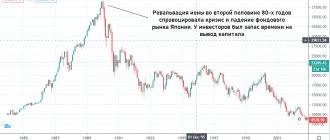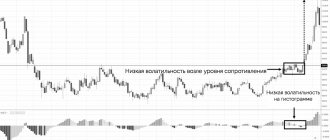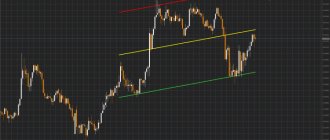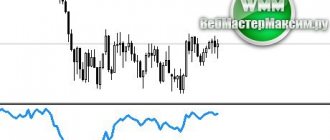Yuan
The Chinese yuan is the basic unit of the Chinese monetary system, Renminbi (RMB - Chinese "people's money"). There are 10 jiao in one yuan, 10 fen in one jiao (fen is gradually going out of circulation).
The Renminbi system was introduced in 1949, when the People's Republic of China was founded, and replaced dozens of currencies previously used in different regions of China. In the first years of the existence of the PRC, the monetary unit experienced hyperinflation. This was due to the transition to a centralized financial system, which was largely in place by 1952. The only denomination of the yuan was carried out in 1955, when old money was exchanged for new ones in a ratio of 10,000:1.
Currently, the yuan is in circulation throughout the national territory of China, with the exception of the special administrative regions of Hong Kong (Hong Kong) and Macao (Macao). Issued by the People's Bank of China, which determines the official exchange rate.
Devaluation of the Chinese yuan - a risk indicator or a new economic weapon
Today, the national Chinese currency, the yuan, updated its 11-year lows against the US dollar.
On Thursday, the USD/CNY pair soared to 7.093 on the international foreign exchange market. The last time such values were observed was in March 2008.
Donald Trump's election promises in 2015 “about the need for fundamental changes in US trade relations with China” marked the beginning of a new stage in the devaluation of the Chinese national currency. From then to today, the yuan has depreciated by 15% against the US currency.
The trend line of China's national currency against the US dollar began to look up.
The reason for such a significant devaluation of the yuan was the fact that the United States and China are the largest trading partners in the world. The mutual trade turnover of the two countries exceeds $600 billion. At the same time, the export of Chinese goods to the United States for many years was significantly greater than the import of American products, which led to a record US trade balance deficit of $323 billion at the end of 2021.
In order to correct this imbalance, in the spring of 2021, Donald Trump intensified the trade dispute between the two world powers with the White House raising tariffs on Chinese goods imported into the United States. China's symmetrical response was not long in coming.
Strengthening tariff barriers leads to higher prices for products throughout the entire production chain, ultimately reducing the competitive advantages of export-oriented national producers.
The International Monetary Fund (IMF) in its report on the Chinese economy warns that in the absence of a long-term agreement between Beijing and Washington, the Chinese economy will face a further decline in growth rates, as China's access to foreign capital markets and technology will be significantly limited.
In the context of deteriorating macroeconomic indicators in China - a record decline in GDP over the past 28 years against the backdrop of 17 years of minimum growth rates in industrial production - monetary authorities are using all sorts of tools to restore economic activity in the country.
Thus, the introduction of a new corporate lending mechanism by the National Interbank Finance Center of China on August 20, 2021 led to a reduction in the cost of funding national enterprises to 4.25% per annum, which is 10 percentage points lower than the base refinancing rate (4.35%) .
This monetary easing program involves monthly adjustments to the value of money in the economy depending on market conditions on the open market. Thus, international investors began to set their expectations for the beginning of a cycle of easing of China's monetary policy in the medium term.
At the same time, economists at the investment bank Societe Generalsle consider the reduction in lending costs in China insufficient to intensify business activity in the country in a situation of global tariff restrictions, recommending an increase in government spending to support local producers.
However, despite a slight decrease in interest rates, the process of liberalizing monetary policy in the world's largest economy has begun.
A decrease in discount rates in the economy usually leads to a weakening of the national currency of the state, especially during periods of deterioration in macroeconomic parameters. The reason for this is the interest rate differential, which implies an alternative choice between assets that bring different returns.
The exchange rate of the national currency of the world's largest Asian economy has become an indicator of investor sentiment. Against the backdrop of international trade confrontation, the process of risk aversion predetermines the continued devaluation of the yuan.
After the Chinese currency surpassed the psychologically important level of 7 yuan per US dollar, White House trade representative Peter Navarro said that “the United States will take decisive action” against the devaluation of the Chinese currency, which, in his opinion, will help improve the competitive position of Chinese manufacturers.
For its part, the Chinese Central Bank denies its involvement in the devaluation of the yuan as a tool to counter American tariffs.
The weakening of the yuan cannot be underestimated because, as Washington's largest trading partner, Beijing, by devaluing its currency, makes its goods more competitive on the world market, thereby increasing the already bloated US trade deficit.
And the released data for the month of July 2021 on the trade balance of the Celestial Empire became a pleasant surprise for the market, since trading participants included in their forecasts a decline in China’s exports and imports against the backdrop of deteriorating prospects in international trade.
Thus, exports from China in July increased by 3.3% in annual terms compared to July last year, with market expectations of a drop of 2%. Imports in July fell 5.6% less than expected (-8.3%) after falling 7.3% in June. Thus, we are seeing an increase in the trade balance by 64% (from $27.49 billion to $45.06 billion) compared to July 2021.
It can be concluded that China’s international partners are in no hurry to break off trade relations with the world’s largest economy that have been built over the years. Possible reasons for this deviation in indicators were the accelerated purchase of Chinese-made goods in anticipation of the introduction of strict duties by the United States.
At the same time, Bank of America Merrill Lynch analysts in their review dated August 7 suggested that the introduction of new American duties at the end of this year on Chinese goods in the amount of 10% could lead to a fall in China’s national currency to 7.3 for the USD/CNY pair. and with 25% tariffs from the United States, the yuan will collapse to 7.5.
However, there are also more moderate estimates. The Trading Economics macroeconomic model shows a high probability of the yuan recovering below 6.95 by the end of September, and on the horizon of 12 months, the exchange rate for the USD/CNY pair will stabilize at around 7.02.
The expectation of a recession in the global economy encourages investors to look for investment-attractive objects for investing their funds, maneuvering between instruments with different rates of return on capital.
The dynamics of China's national currency can serve as an indicator of risk in making an investment decision. The weakening of the yuan may indicate a continuation of international trade confrontation, and its strengthening may indicate the impending stabilization of global capital markets. Along with the devaluation of the national currency, which has a beneficial effect on Chinese exporters, the steps taken by the Chinese monetary authorities can intensify business activity within the country and reduce the negative consequences of international trade wars.
However, excessive use of currency as a tool of competition carries increased risks of capital outflow from the country, rising costs of imports and, ultimately, reducing the investment attractiveness of national assets.
BCS Broker
Coins and banknotes
Today, coins are issued in denominations of 1, 2 and 5 fen, 1 and 5 jiao, 1 yuan. Banknote denominations are 1, 5, 10, 20, 50, 100 yuan. The 1 yuan note depicts Xihu Lake in Hangzhou (eastern Zhejiang province), 5 yuan - Huangshan Mountains (eastern Anhui province), 10 - Three Gorges of the Yangtze River (southwestern Sichuan province), 20 - Guilin landscape of the Lijiang River (Guangxi) -Zhuang Autonomous Region in southern China), 50 - Potala Palace in Lhasa, the capital of Tibet (western China) and the Great Hall of the People in Beijing on the 100 yuan banknote. On the other side of all banknotes is a portrait of the first Chairman of the People's Republic of China, Mao Zedong. In addition to Chinese, the banknotes contain inscriptions in the languages of national minorities - Zhuang, Mongolian, Uighur and Tibetan.
Expert assessments
According to forecasts, the yuan exchange rate is already successfully competing with the dollar. The successful growth of the PRC economy with its multi-billion dollar turnover allows the currency to successfully fuel the interest of analysts.
Those who wanted to make a little extra money from the yuan's fluctuations will be disappointed. In the coming periods, the Chinese currency will behave stably both against the ruble and in the case of other banknotes. Therefore, investing in Chinese money is one of the best ways to invest in currency today.
Large jumps in the Russian ruble are also not expected. Experts say that the currency will have a stable exchange rate both within the country and on the territory of other states.
We also recommend the article: Opel announced its return to the Russian market
Reasons for the stability of the Chinese currency:
- Large volumes of exports and foreign trade transactions
- Competent currency regulation by the Central Bank of China: a balance between devaluation and increasing output volumes
- The scale of the domestic economy, relatively low imports and low dependence on the financial condition of other countries
- The recent decline in oil prices
What does the course depend on?
The value of Chinese money, like any other currency, has always been based on its relationship to the American dollar. The currency situation in many countries of the world depends on the size of US foreign trade economic transactions.
However, in 2015, the Chinese government decided to move away from such calculations and began to take measures to liberalize Chinese banknotes. Now rates are set based on a basket of currencies. Today, along with the dollar, it includes the euro, British pounds and Japanese yens. If we trace economic statistics from this period, then the financial situation of the PRC began to develop quite successfully.
Measures were also taken to minimize losses from the oil issue and prevent the depreciation of money. Policy regarding the Chinese currency was strictly regulated by the state. However, forecasts for the Chinese yuan in 2021 do not contain information about the introduction of any restrictions, so this measure can be considered obsolete.
The yuan is now in a fairly stable position: it is one of the few currencies in the world that is associated with reliability and consistency. China is steadily moving towards gaining economic primacy on the world stage, and the strengthening of the yuan only helps it in this.
We also recommend the article: News of recent changes to UTII in 2017
Huge foreign debt and capital outflow from the country could pose threats to the stability of Chinese currency. Many corporations from developed countries located their production in China due to cheap labor. Now wages in China are rising steadily, and this could become a serious problem over the next few years.
Troubles should be expected from the state budget: when a recession occurs, a negative balance can become a serious obstacle to successfully overcoming difficult times.
Yuan exchange rate forecast
Based on a comprehensive analysis of the political situation on the world market and taking into account the current growth rates of the Chinese economy, a forecast for the yuan exchange rate for 2021 was compiled. For convenience, the data is consolidated in a special table.
Table 1 – Yuan (CNY) exchange rate dynamics for 2021
| Month | Opening price | Min and max values | Closing price | Monthly dynamics, % | Total, % |
| January | 9.31 | 8.97-9.31 | 9.11 | -2.1 | -7.5 |
| February | 9.11 | 9.11-9.52 | 9.38 | 3.0 | -4.8 |
| March | 9.38 | 9.38-9.73 | 9.58 | 2.2 | -2.6 |
| April | 9.59 | 9.40-9.69 | 9.55 | -0.5 | -3.1 |
| May | 9.54 | 9.49-9.77 | 9.63 | 0.9 | -2.2 |
| June | 9.63 | 9.51-9.79 | 9.61 | 0.2 | -2.0 |
| July | 9.65 | 9.56-9.86 | 9.71 | 0.6 | -1.4 |
| August | 9.71 | 9.71-10.01 | 9.88 | 1.8 | 0.3 |
| September | 9.88 | 9.55-9.88 | 9.70 | -1.8 | -1.5 |
| October | 9.70 | 9.45-9.73 | 9.59 | -1.1 | -2.6 |
| November | 9.59 | 9.59-9.97 | 9.82 | 2.4 | -0.3 |
| December | 9.82 | 9.82-10.26 | 10.11 | 3.0 | 2.6 |
Reasons for the expected dedollarization
1. Decrease in the economic power of the United States. According to the IMF, the United States' share of the global economy is now 15%, which is 22% less than it was in 1980. Given these dynamics, there are doubts about the ability of the United States to make the efforts necessary to maintain dollar dominance. For comparison, the Chinese economy is already ahead by 4%, its share in the world economy is about 19%. The Chinese also left behind the European Union (EU share – 16%).
2. US sanctions policy has undermined the authority of the dollar. The Americans imposed strict restrictions on Iran and suspended the access of companies and citizens of this country to dollar financial instruments. As a result, other governments have become more skeptical of the US currency.
China, Russia and other developing countries are unhappy with the hegemony of the dollar, which gives the United States an advantage in international financial markets. BRICS and the European Union can accelerate the creation of payment systems independent of US policies.
3. The current international financial system is subject to periodic crises. The last time a “black swan” occurred was due to a credit failure in the United States, which resulted in many companies going bankrupt in 2008. Before that, in the mid-1990s, the Asian financial crisis erupted, leaving investors in shock and despondency. Diversification in international payments is one of the tools that can delay and smooth out global crises.
Forecast of the Chinese yuan to Russian ruble exchange rate for today and tomorrow
Convert
CNY
Forecast for tomorrow
11.21 ₽
The current exchange rate of the yuan to the ruble according to the Central Bank of the Russian Federation is 11.3015 ₽ (eleven rubles three kopecks). The value of the Chinese yuan has increased by ₽(). The predicted average yuan exchange rate for tomorrow will be 11.21 ₽ (eleven rubles twenty-one kopecks).
- Forecast of the Chinese yuan to Russian ruble exchange rate for today and tomorrow
- Yuan to ruble exchange rate forecast chart
- Forecast of the yuan to ruble exchange rate for the week and month
- Forecast of the Chinese yuan to ruble exchange rate for the year











